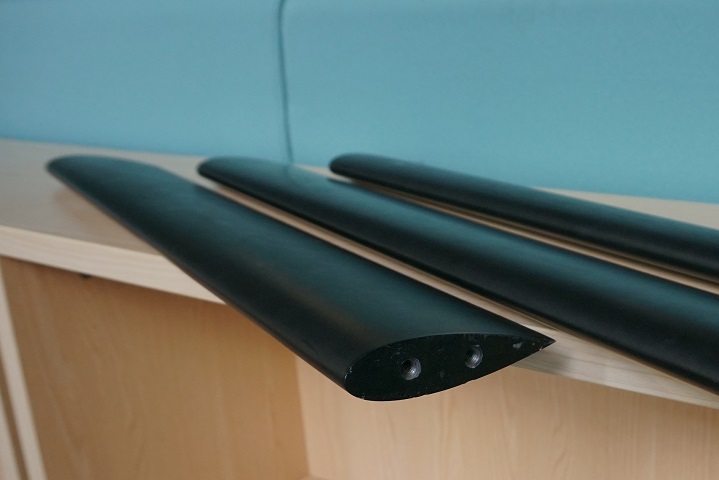Welcome to technical page
CLT with MATLAB |
Invariant theory |
Marine turbine <= |
Statistics |
Marine turbine
This page shows the procedure how to design a 1:20 small scale prototype of a 1MW Darrieus marine current tidal turbine. For more information of the marine turbine design, please click here
1, Mathematical model
The aerodynamic forces acting on a blade element at a random position (rotation angle θ) are divided into tengential and normal forces, which are relative to the three vectors of the velocities (the absolute velocity of fluid v’, the relative velocity of the air on the blade element V, and the velocity of the blade element Rω) who attacks the blades during a complete rotation around the vertical axis.
The three velocities could construct a triangle,

Attack angle,
The lift coefficient ca and drag coefficient cd can be extracted from the NACA codes. NACA has published a plenty of measurement of different blade profile, for instance, curves of these two coefficients of NACA 0025 look like this (naca-report-708),

Then ca and cd can be fitted as,
And the coefficient of tangent force can be calculated by,
Therefore, the tangent force is calculated by the upstream and downstream forces (Voneschen 1989),
where A is the area of chord section,
And the output power,
Implementing the equations by proper parameters, the performance of the turbine can be obtained.
2, CFD model
The coefficients of lift and drag can not only be measured by a wind tunnel, but also can be extracted from a computating fluid dynamic (CFD) model. The velocity field around the blade with an angle of atack looks like this,

It is easy to inplement the parametric study of the angle of attack in ANSYS/FLUID, and to extract the coefficients of lift and drag. They looke like these,
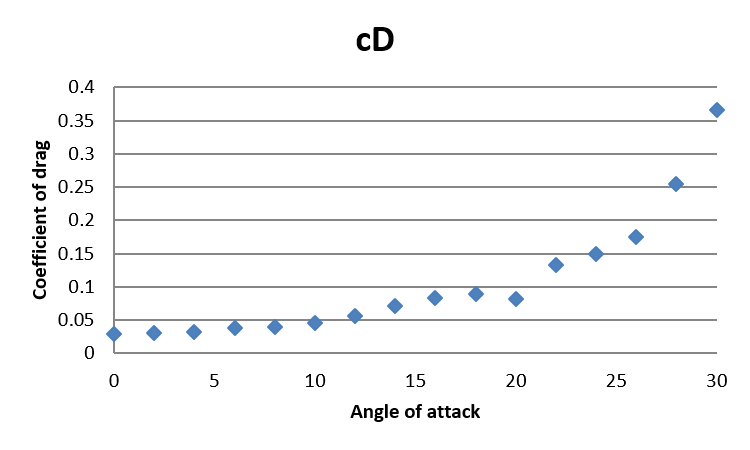
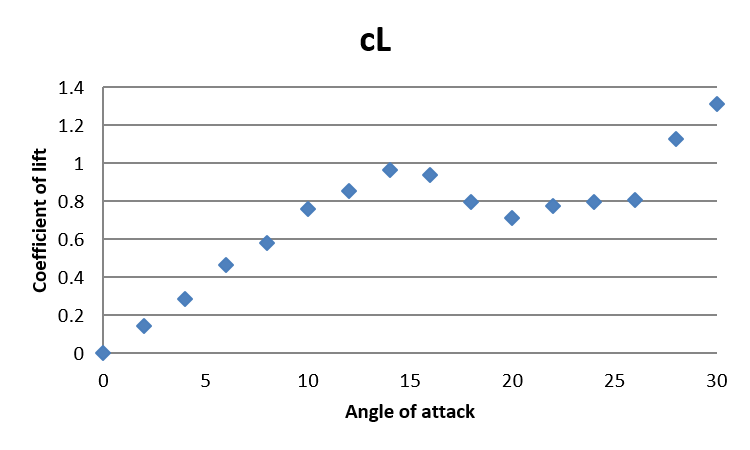
Inplementing a CFD model for a turbine with 3 blades, the velocity around the turbine looks like this,

It is interesting to see that the moment is a positive value at most position (rotation angle θ) which means that the turbine can self-start after a few oscilations though it can not stable without the external torque. This is quite different from the early knowledge that the Darrieus turbine can not self-start (Voneschen 1989).
Then go back to the mathematical model by employing the coefficients of lift and drag extracted from the CFD model, we can calculate the performance of the turbine. For instance, the angle of attack, relative velocity, tengential force, normal force, torque, and the output power look like these,
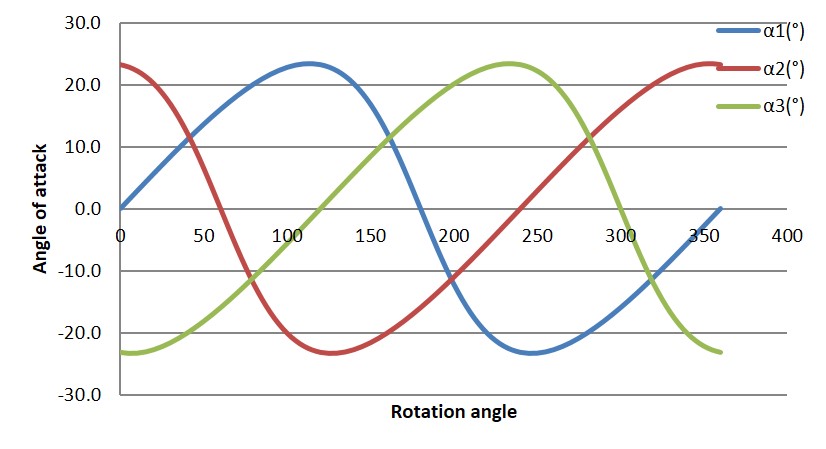
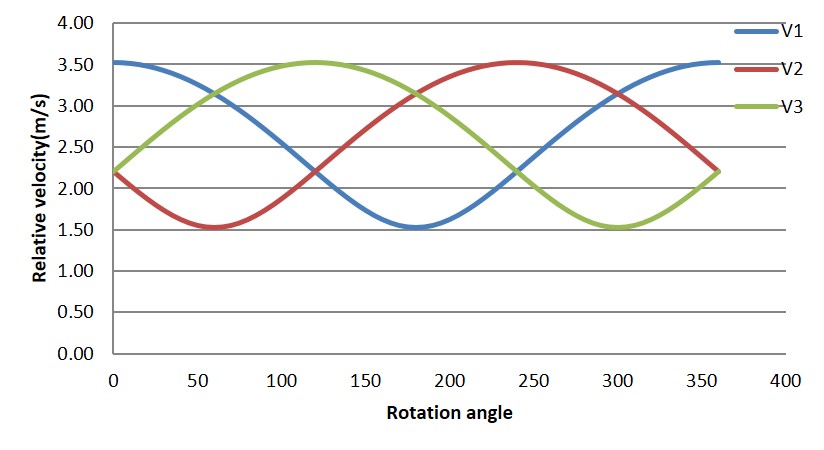
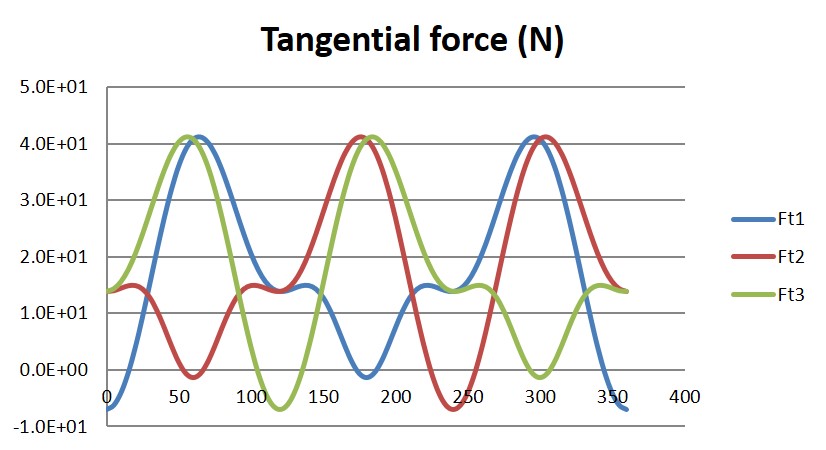
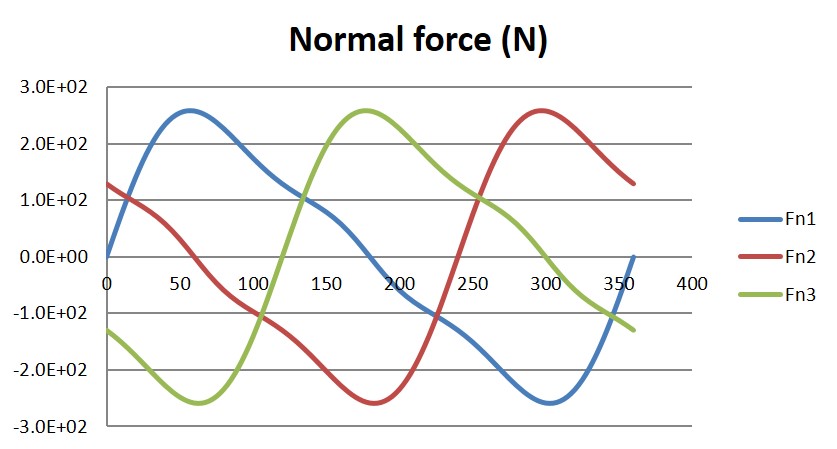
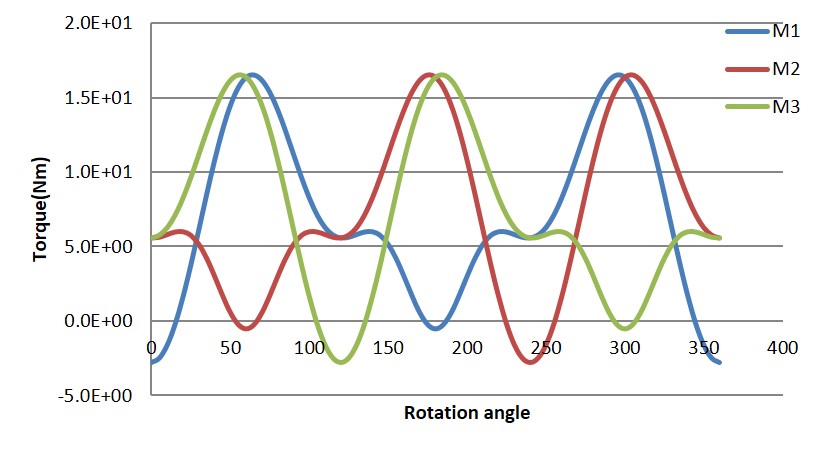

3, FEA model
With the data from the mathmatical and CFD models, FEA modelling can be employed to optimize the design of the turbine componments. The stress distribution of the spokes looks like this,

A set of turbine blades made up of CFRP composite have been manufactured. The next step would be to assembly the whole turbine after the individual components, such as the spokes, are ready...
For more information of the marine turbine design, please click here
